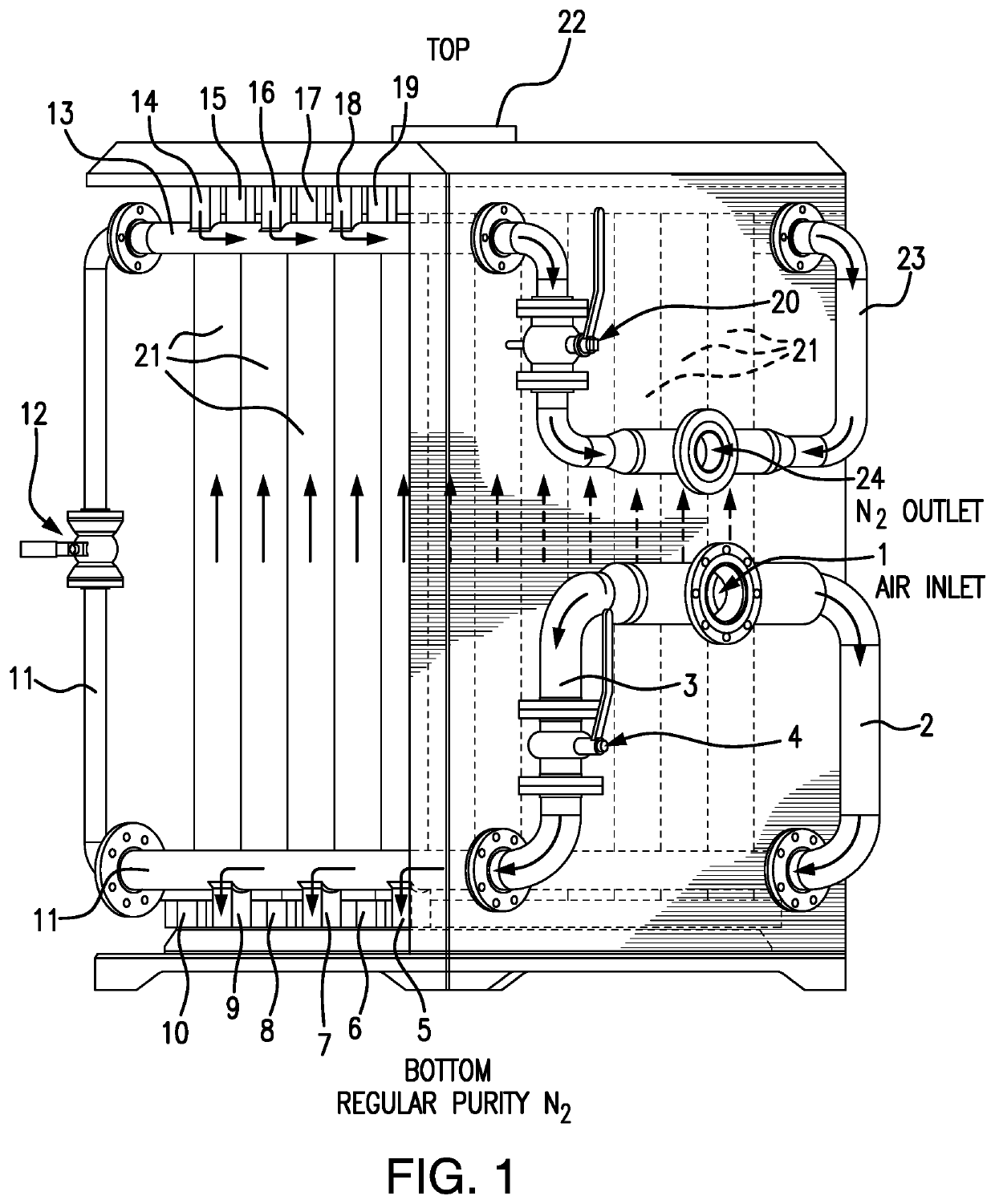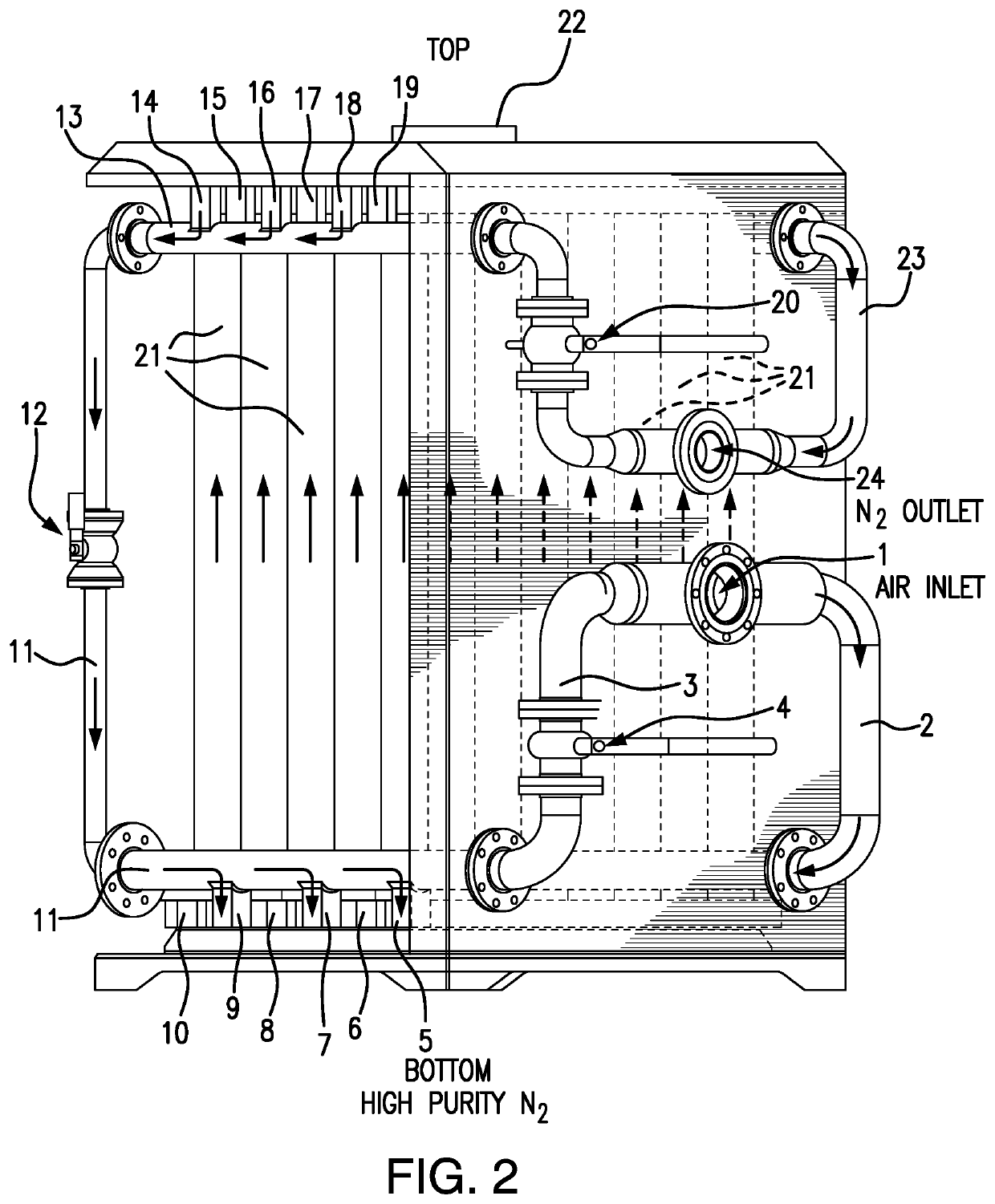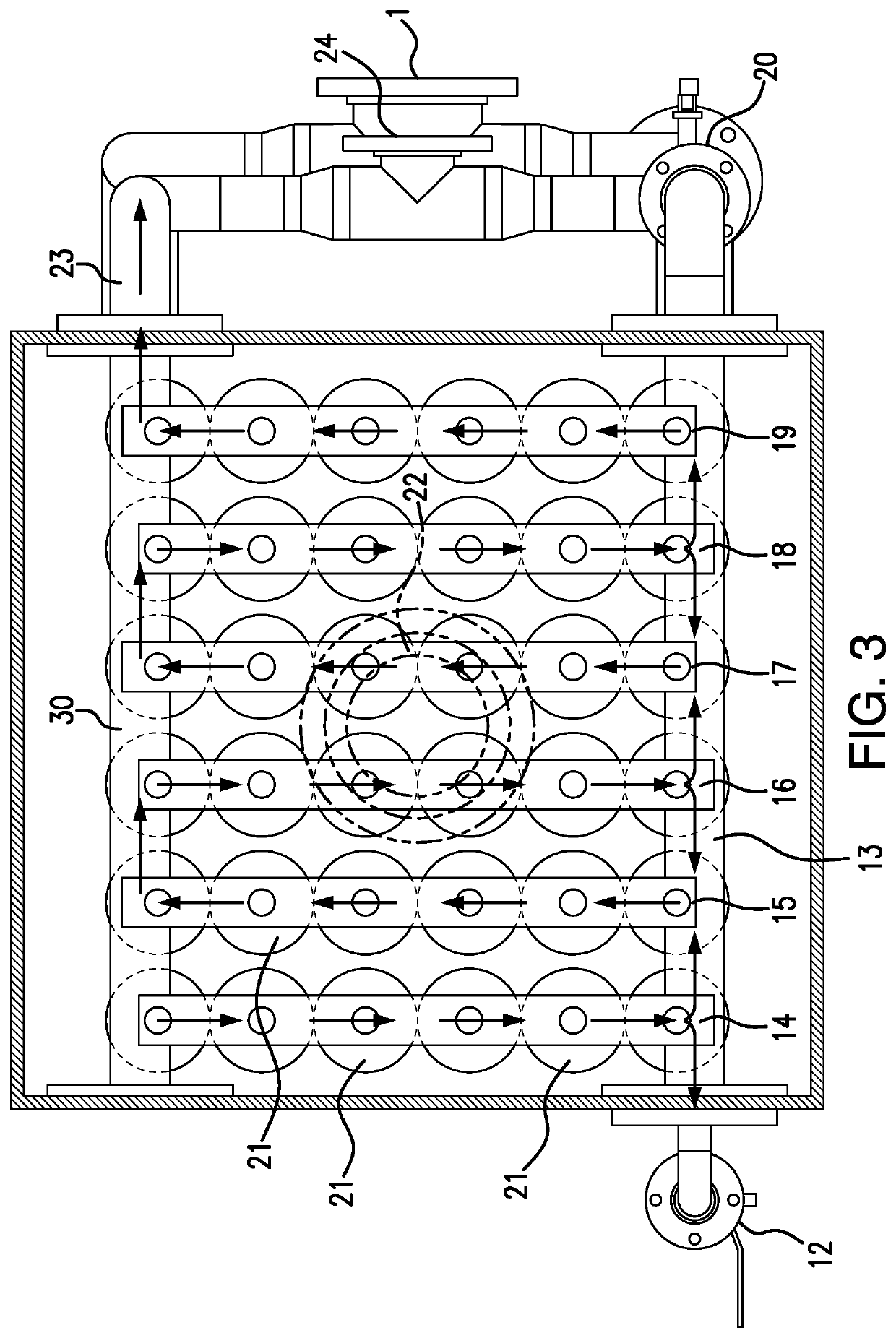Compact membrane module system for gas separation
a membrane module and gas separation technology, applied in the separation process, membranes, dispersed particle separation, etc., can solve the problem that the series arrangement occupies considerably more space, and achieve the effect of reducing the volume occupied by the membrane module system, maintaining the flexibility of the system, and being convenient to configur
- Summary
- Abstract
- Description
- Claims
- Application Information
AI Technical Summary
Benefits of technology
Problems solved by technology
Method used
Image
Examples
Embodiment Construction
[0031]The present invention comprises an apparatus having a plurality of membrane modules, wherein the apparatus has a first configuration in which the modules are all operated in parallel, and a second configuration in which the modules comprise two groups which are effectively arranged in series. The configuration of the apparatus can be changed simply by changing the position of a small number of valves, typically three valves.
[0032]The parallel configuration is used to produce a gas having moderate purity, and the series configuration is used to produce a gas having high purity.
[0033]In brief, when the system is operated in the parallel mode, the feed gas is distributed among all of the modules, and passes through the modules simultaneously. When the system is operated in the series mode, the feed gas is directed into some, but not all, of the modules, and the product of said modules is then directed into some or all of the remaining modules, i.e. those modules that did not rece...
PUM
| Property | Measurement | Unit |
|---|---|---|
| degree of purity | aaaaa | aaaaa |
| purity | aaaaa | aaaaa |
| energy | aaaaa | aaaaa |
Abstract
Description
Claims
Application Information
 Login to View More
Login to View More - R&D
- Intellectual Property
- Life Sciences
- Materials
- Tech Scout
- Unparalleled Data Quality
- Higher Quality Content
- 60% Fewer Hallucinations
Browse by: Latest US Patents, China's latest patents, Technical Efficacy Thesaurus, Application Domain, Technology Topic, Popular Technical Reports.
© 2025 PatSnap. All rights reserved.Legal|Privacy policy|Modern Slavery Act Transparency Statement|Sitemap|About US| Contact US: help@patsnap.com



